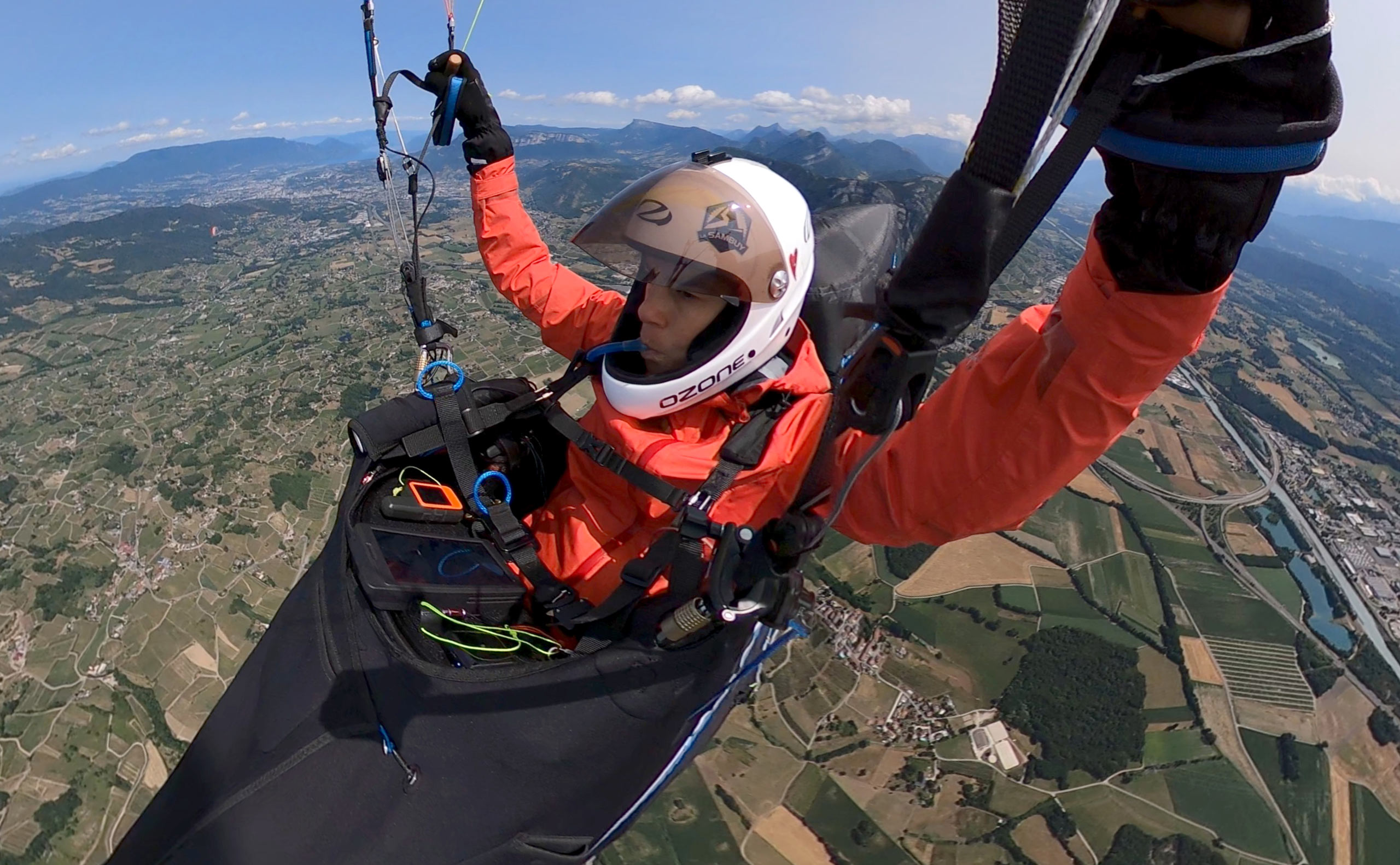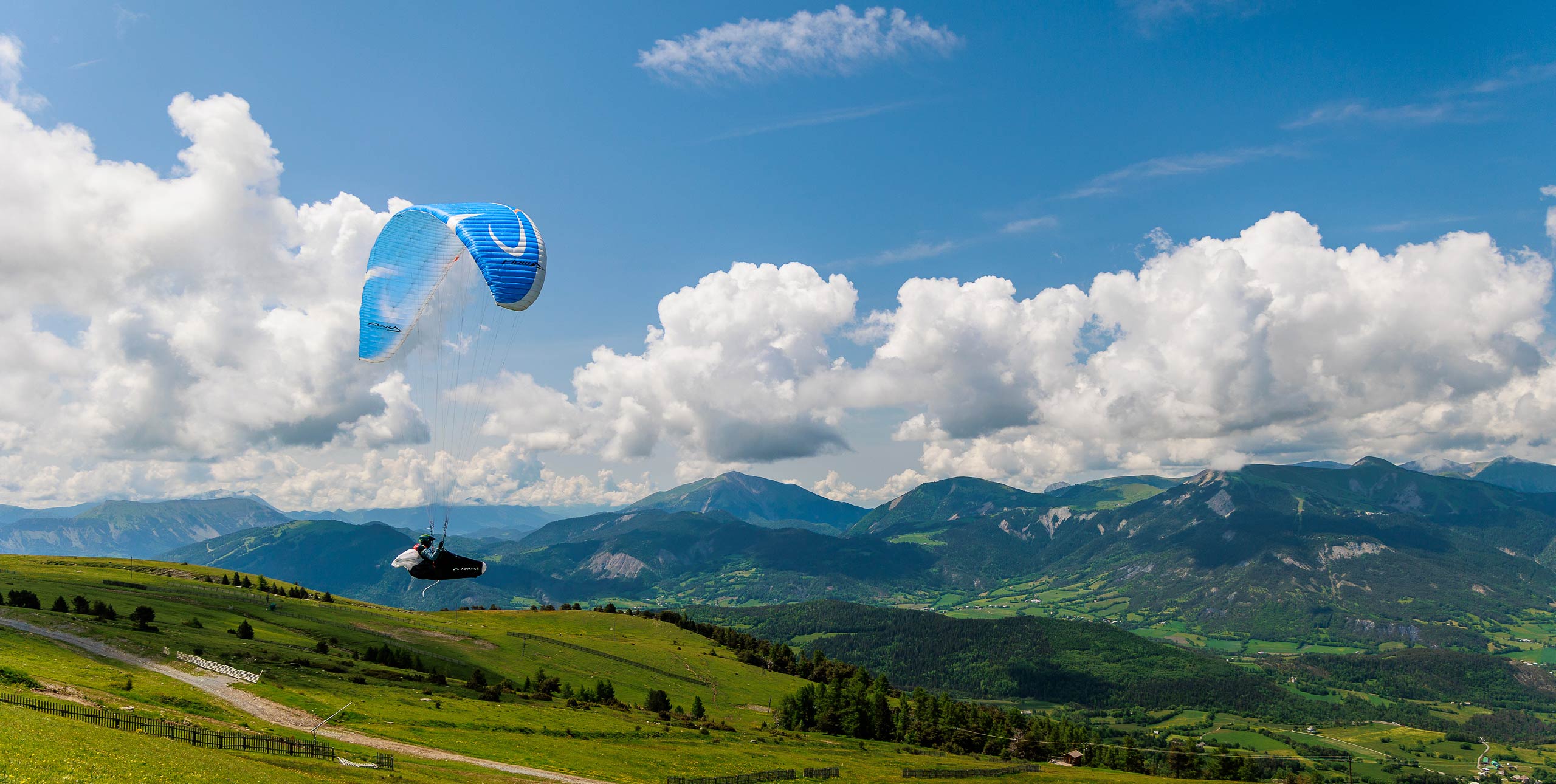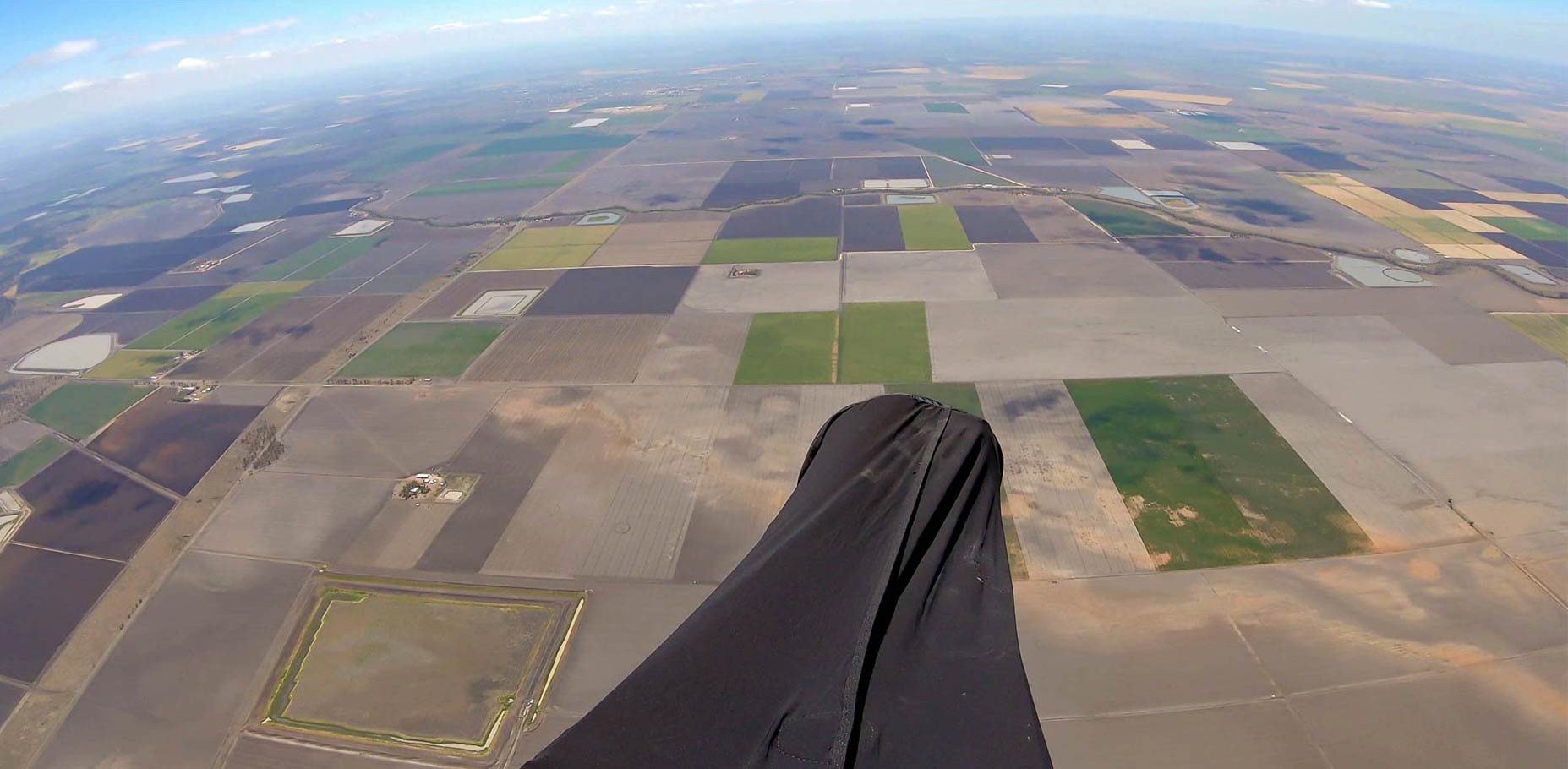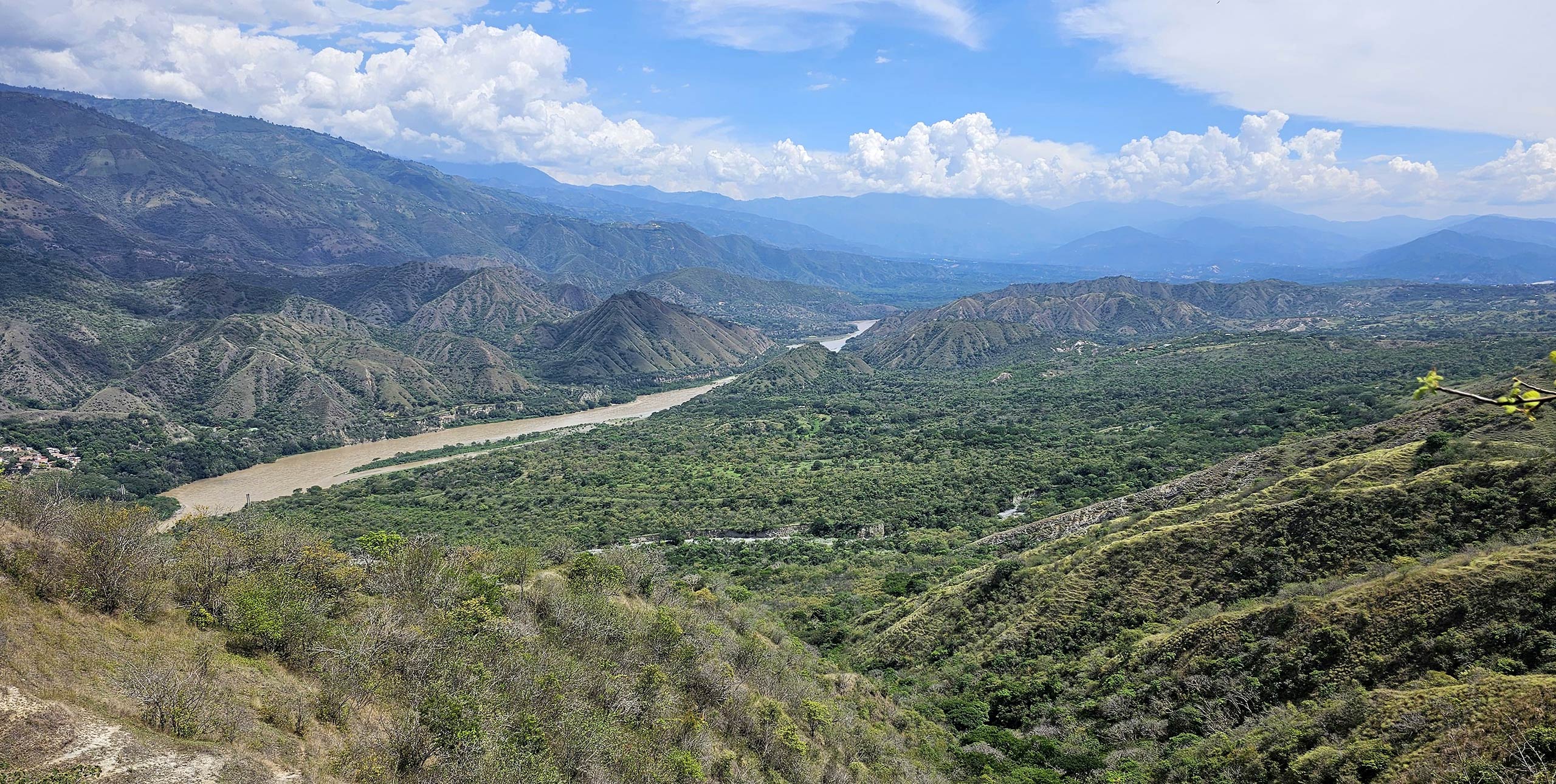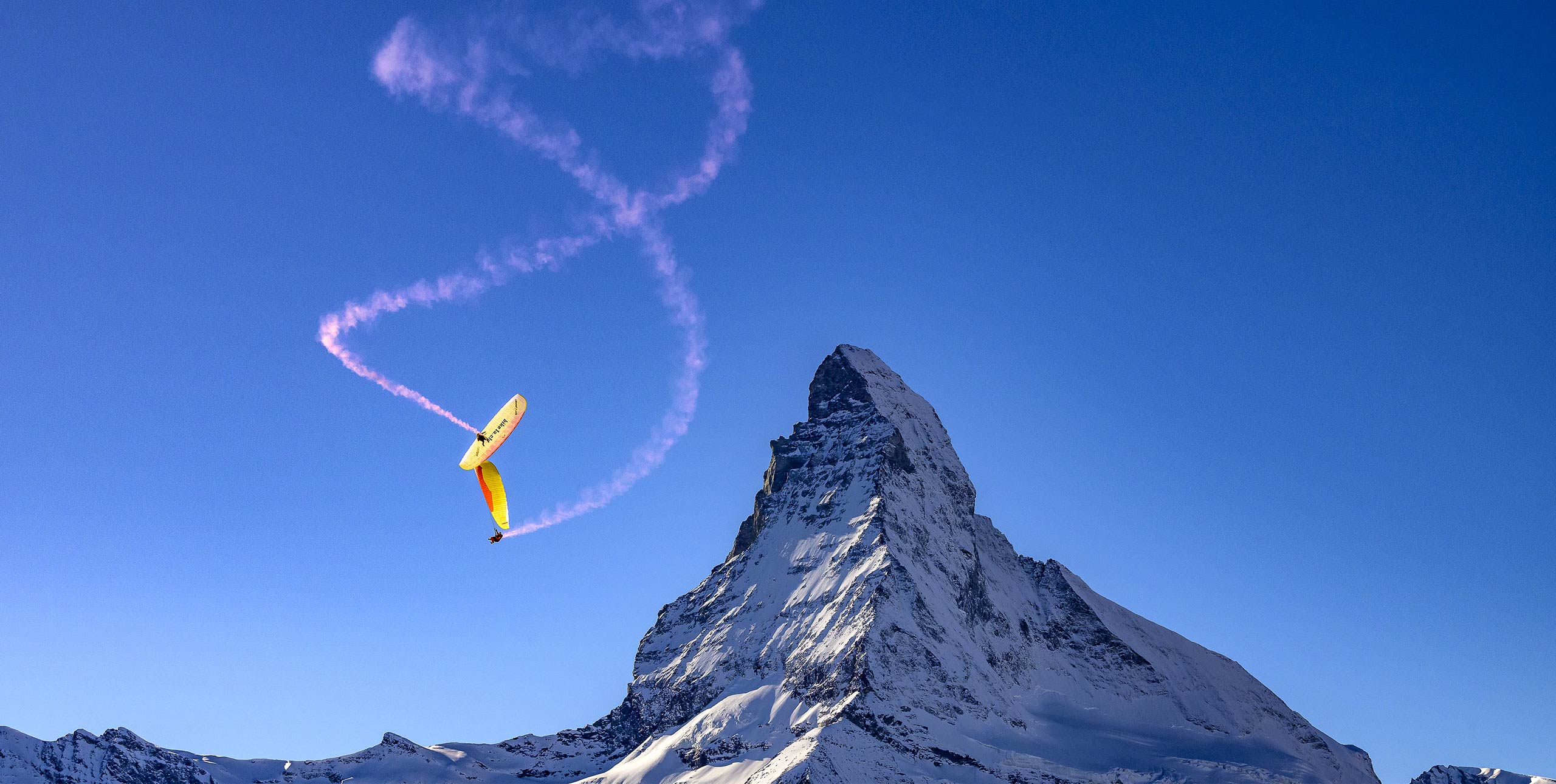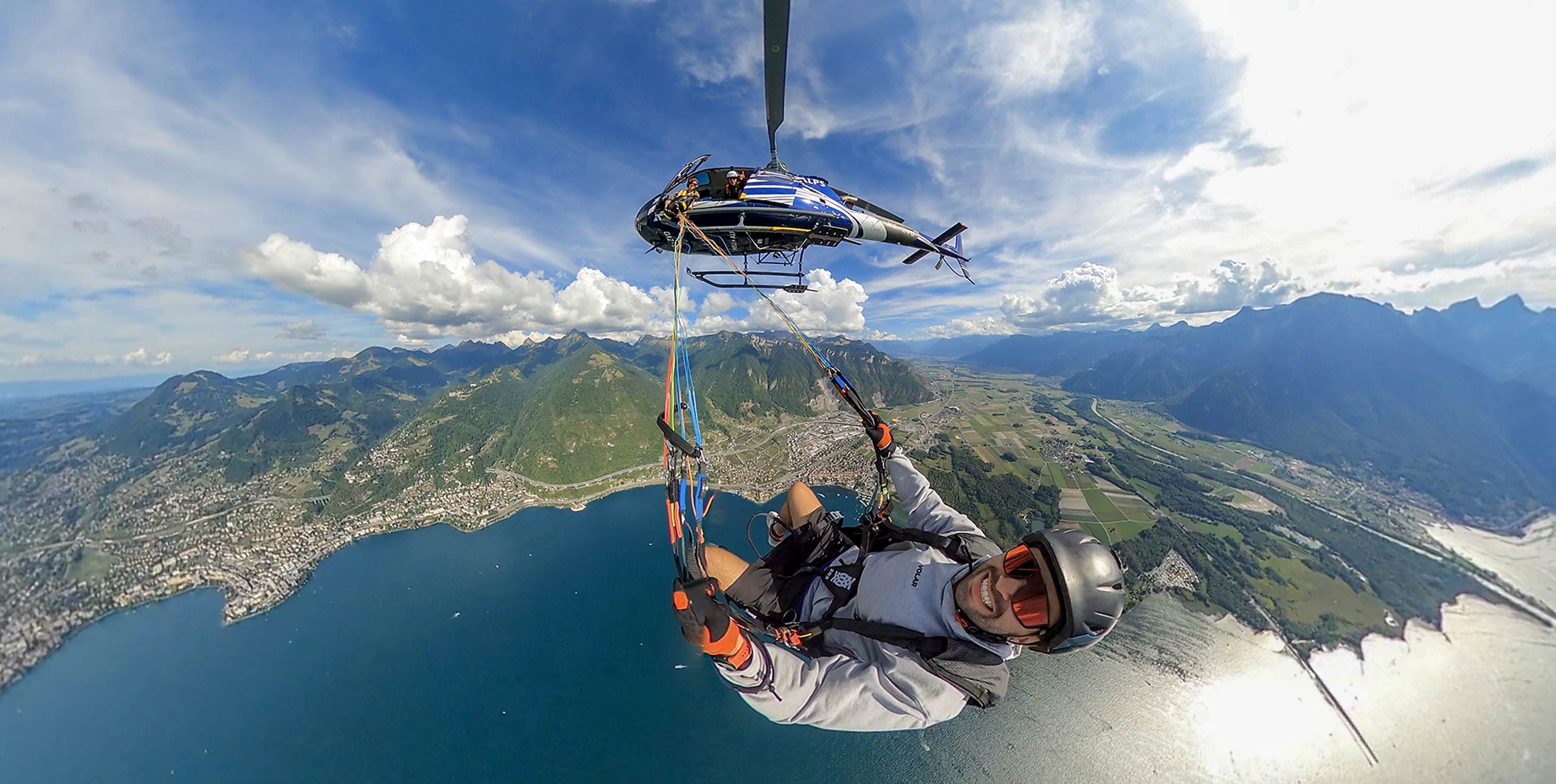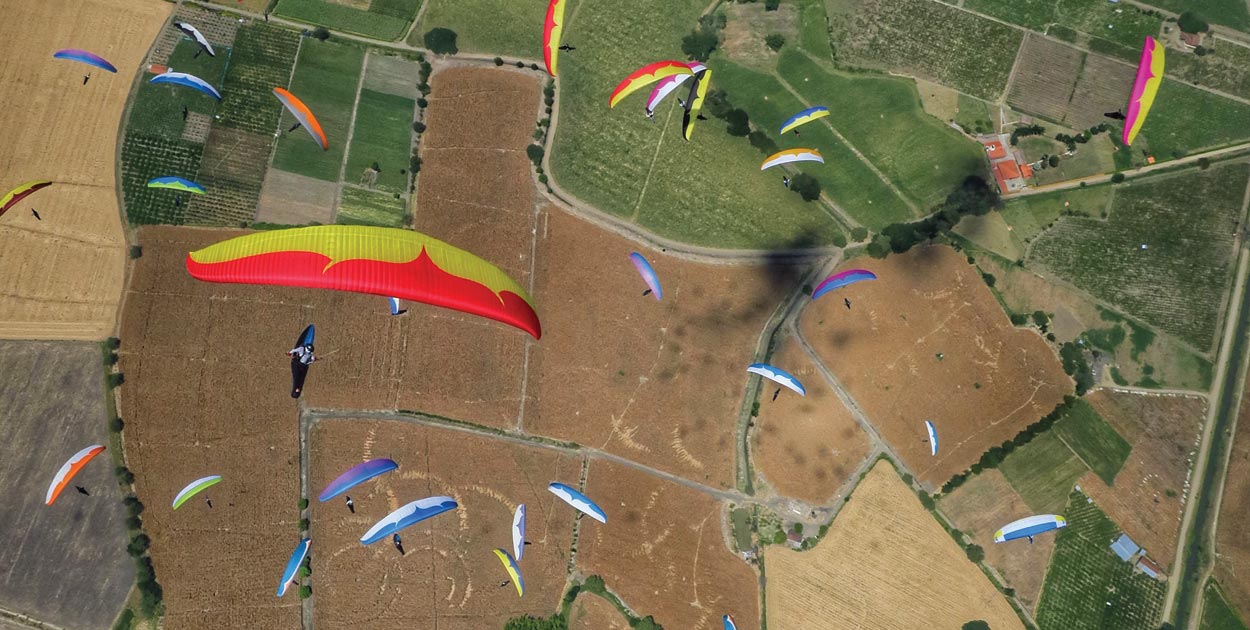
Hugh Miller beat the CCC wings to goal with his sports class Queen 2 on the first day of the British Winter Open in Colombia in 2019. He then went on to fly a Zeno and Enzo 3 in the other tasks and got worse results. Here he shares what he learnt from the experience.
1. Being relaxed helps
The truth is, I was really scared before the competition. On the practice day, instead of racing my Enzo 3 full-bar down the courseline with the lead gaggle, I glided back to Roldanillo for an early landing. I was not on my best form, and I wondered what I was doing there. I’d brought my EN C Queen 2 with me “just in case”, and opted to fly that on the first couple of competition days. Knowing I was on a three-liner set me up to not care about the result and just to have fun.
2. You have to be happy with what you fly
Knowing you can 100% handle your wing is a big psychological advantage, and this was definitely the case flying the Queen 2. I know I’ve often kidded myself I can handle a competition wing, when I probably can’t, and I’m going to do more SIV to address that. Competitions are full of pilots taking bigger-than-ordinary risks, and there’s a fair whack of “normalisation of deviance” at play. Having said that, I also noticed how fear can just breed fear, and it took a couple of sensible chats with friends to realise that my fear was boxing me in and that moving to a Zeno wouldn’t be a big deal.
3. Focus on enjoyment, not results
Focusing on enjoyment is the mindset that European Paragliding Champion Theo Warden credits for his success. It also helps even if you don’t do so well. British pilot Mark Watts was lying in fourth before the final day, and flew the last day to win. He landed short, and finished 17th. “Who cares?” he reasoned afterwards
4. Gliding slower in better air is better than gliding fast in bad air.
I was given a big lesson at the start of the first task. The lead gaggle of 30 pilots blasted on down the ridge, and basically got squashed in the sink. Those of us slightly behind dodged the hole in the road, and veered right under a good-looking line of clouds. Within five minutes we had an advantage of around 700m. As paragliding guide and author Kelly Farina says, a pilot on a B on a good line will beat a pilot on a D on a bad line, every time.
5. Being behind helps you make better decisions
On the last day, Alex Coltman came into goal third on his Zeno. “How?” I asked.
“Well I was about 30th before the final glide, and I just watched everyone fall out of the sky on different lines and took a better one” he replied. “It was easy!”
I was surprised how being behind on the Queen 2 could actually help a lot. I found myself looking at the view ahead like a TV screen to try and notice which of the 50 wings were climbing faster, and being really choosy about my lines.
Some pilots, like Xevi Bonet, are masters at “getting themselves back in the game” while others quickly lose their heads when left behind.
6. Sports class wings are really fun to fly in comps (up to a point)
You get the pleasure of really compact handling, and the edge in climbs as you can whip inside others. And you get to enjoy some really annoyed looks from other pilots. From the other side of the fence, I can safely say there is nothing worse than seeing someone on a sports wing ahead of you when you’re already half-way round the course.
7. Three-liners are hard to fly with the bar nailed
I’ve heard a lot of talk of pilots flying faster on EN-B and EN-C gliders because they feel more confident. I just don’t buy it. The Queen 2 has a really sorted B-C bridge system, which gives probably the most effective pitch control of any C wing I’ve flown, but it’s heavy, hard work, and nowhere near as intuitive or connected in feel as a two-liner. I felt much safer flying a Zeno fast. If you want to compete, I really would recommend you get lots of experience, then get an accessible two-liner and SIV it until you are really confident, as I have no doubt that two-liners are the only kinds of wings I’d really want to race in the future.
8. If you fly a lower-aspect wing than your friends, don’t look up!
It all went wrong, of course, on day two. It started off with me seeing a fellow Queen 2 in the start gaggle. I looked closer at this rounded little thing bobbing around in a sea of high-aspect CCC sharks and, to my horror, suddenly realised I was looking at the same wing I was flying! Mentally, this destroyed me.
The previous day I think I’d managed to pretend I was on a hotter wing by simply not looking up. How the hell did I think I was going to manage any kind of race under this recreational wing?! I still had a very enjoyable race, but found I was getting punished in the weaker conditions where the difference between classes becomes much more noticeable. The two-liners just made it to places I couldn’t quite reach. So, after two tasks with the Queen, organiser Lucho Jimenez kindly lent me his Zeno to fly the remaining three days with.
9. Glide speed matters
“What do you think the glide of an Enzo 3 is at full bar?” asked Ozone test pilot Russ Ogden at breakfast during a competition last year. Around 8 or 9 to 1, was the consensus around the table. “Nope. It’s about 5.5 to 1”, said Russ. This has really stuck with me. Sports class wings like the Queen 2 are obviously a lot slower at full bar and have much steeper polar curves than CCC wings. But at up to half-bar, I seemed to match the Zenos and some CCC wings. Gliding at half-bar unless in really sinky air seemed to mitigate a lot of the performance disadvantage. Don’t try and keep up with competition wings – let them get ahead, spend a minute finding the core, then join them in the strongest bit.
10. Actually, glide speed really matters
On the fourth task, I set off on final glide with another Zeno. We were at the same height, same wings, same colours, everything. We had 7km to go, and my glide calculator was showing I needed 10:1. I tucked my arms in, sucked my cheeks in, and remembering Russ’s advice, stayed gliding at trim. My friend beside me pushed bar, and he pulled ahead but also started dropping below the horizon. A bit like a lawn dart. After 5km, my friend was touching down just on the ESS line, while I cruised over him and glided into goal 2km beyond, with 70m to spare. My glide at trim was at least 35% better than his at full speed.
11. When things get tricky, you have to just hang on in there
The crux of the first task came right at the end. The organisation radioed to say the Pacifico sea breeze had arrived, with a 35km/h westerly wind in the valley. The sky had blued out above us, and the leaders were scrabbling low in the foothills, with a five kilometre battle into a headwind towards the end-of-speed line ahead of them.
Sea breezes tend to kill the thermals, but I was higher, and further upwind, so I stopped in a 1m/s thermal to have a think. No one was getting that high and I thought it was game over. Then I connected up with Michal Gerlach in a surprising 2m/s core. Some vultures were just cross-wind, so I explored, and got a 3-4 m/s tight core. I’ve had a fair bit of experience with sea-breeze fronts from flying at home, and usually in sea air, thermals are tight and punchy cores that go up a couple of hundred metres then just stop… but this one just kept going.
I saw a wispy cloud form above, and then a few minutes later I was up at base, with my Oudie saying I’d make goal with 500m to spare! Result!
With still no other wings ahead of me, I pressed on with half bar, but noticed my groundspeed was around 50km/h. I was in a tailwind aloft, and thought I’d do best to conserve my height as long as possible before I dropped into the sea-breeze headwind, which was bound to kill my glide. I made ESS easily still in the good air up high, but down low the wind was so strong I landed vertically at goal. There was the usual tent in the field playing music with people watching, but I don’t think anyone believed this numpty on a three-liner had completed the course first – and nor did I to be honest – so I just packed up quietly on my own and got on the bus!
12. Watch the monkey
Seb Ospina won both the Colombian Open and British Winter Open. As a natural pilot with over 1,000 hours in the Cauca Valley under his belt, it’s easy to project Seb onto a super-pilot pedestal and see his victories as to be expected. But Seb also has his demons – and his main foe is what he calls his “inner monkey”, the impetuous side of him that always wants to push on and win the small battles.
After some sessions with sports psychologist Thomas Theurillat (Chrigel Maurer’s former Red Bull X-Alps supporter), Seb recognised his priorities as being safety, efficiency and fun – and he has these “anchoring words” written down on his flight deck.
In this, and the previous Colombian Open, he dominated the lead gaggle and also managed to push a lead when needed, winning tasks and conquering his inner monkey too. At no time was this more important than the final day, when we had a five-hour wait for the rain and mist to clear before a task was set.
Seb had nothing to gain by flying an extra task but everything to lose. Most would have crumbled in the ambiguity of this situation but Seb kept it together, using a mindfulness app in the morning to stay centred and calm. “Just breathing is so powerful,” he told me, “just stopping and noticing my breathing when I’m getting stressed, it slows everything right down again.”
13. Josh Cohn is usually right
I noticed that Josh had placed well on his Omega X-Alps in the Monarca Open two weeks previously, so I emailed him for his insights on what he’d learnt from the experience.
“I enjoyed feeling super safe and cranking inside everyone,” Josh replied. “Being out-glided: not so much.” Not quite the mini-thesis on how to beat the two-liners I’d hoped for, but you can’t beat Josh for his cut-to-the-chase realism.
I kept in touch with Josh through the competition, and told him I thought my good result on the first day was probably helped by my devil-may-care attitude.
“Have you read Maxime Bellemin’s book on competing?” Josh asked.
“No,” I replied.
“There’s a bit on self-handicapping,” he continued.
“What’s that?” I asked.
“Deliberately flying a worse performing wing to give yourself an excuse for a bad performance before you even launch,” he replied.
Thanks Josh!
14. I’m often wrong
During the Paragliding World Cup Superfinal in 2013, I wrote an article with the title Paragliding is not a Racing Sport. Basically, I slammed competition paragliding, saying no-one cared about the minutiae of who had beaten who into goal by how many seconds.
This is the sound of me eating my hat. It’s quite a cheap one, more plastic than straw, bought for 50,000 pesos from the market, so it’s a bit chewy. But the buzz in the goal fields, the camaraderie, the laughs, the way two-liners feel like they’re just built for speed, and importantly the fact we had a whole week of epic flying without a single safety incident is enough to convince me I was wrong.
For sure, competitions aren’t for everyone – and please, can we do something about the ridiculous overcrowding at the start? – but I can safely say, I get them, now.


